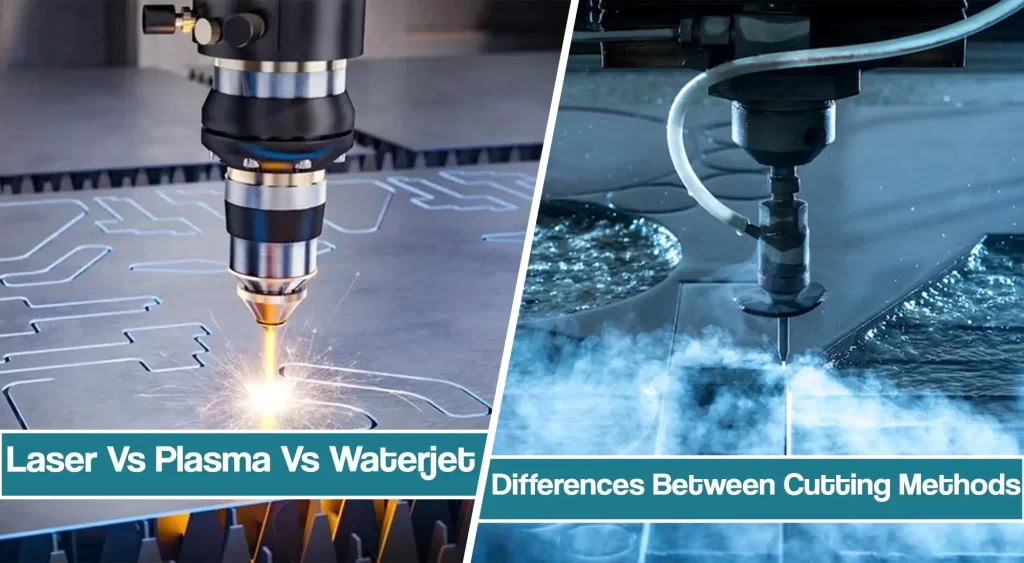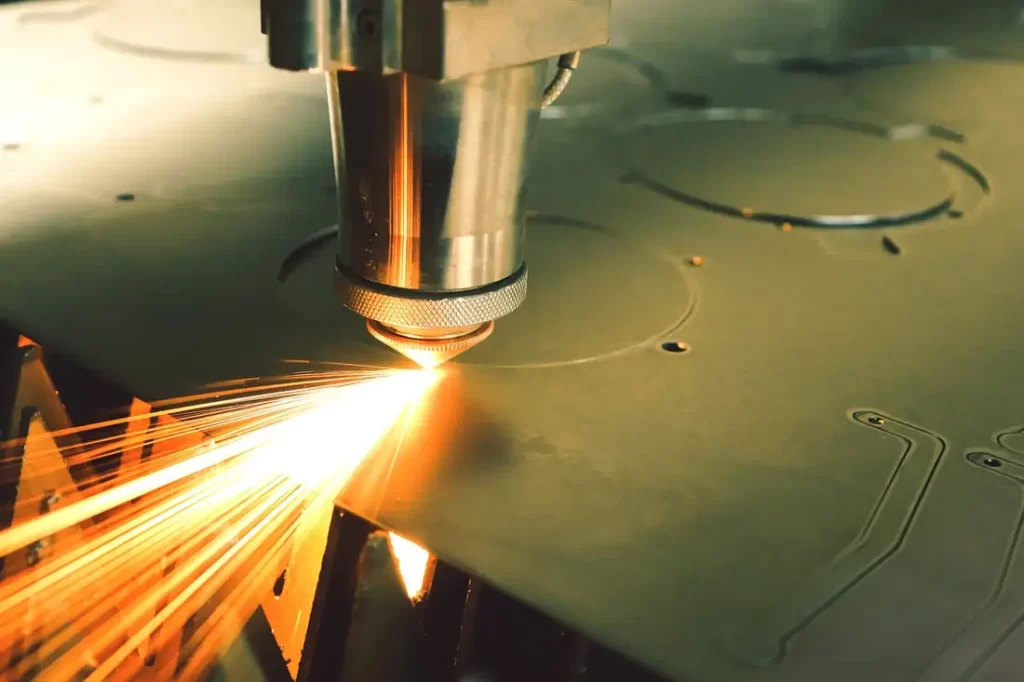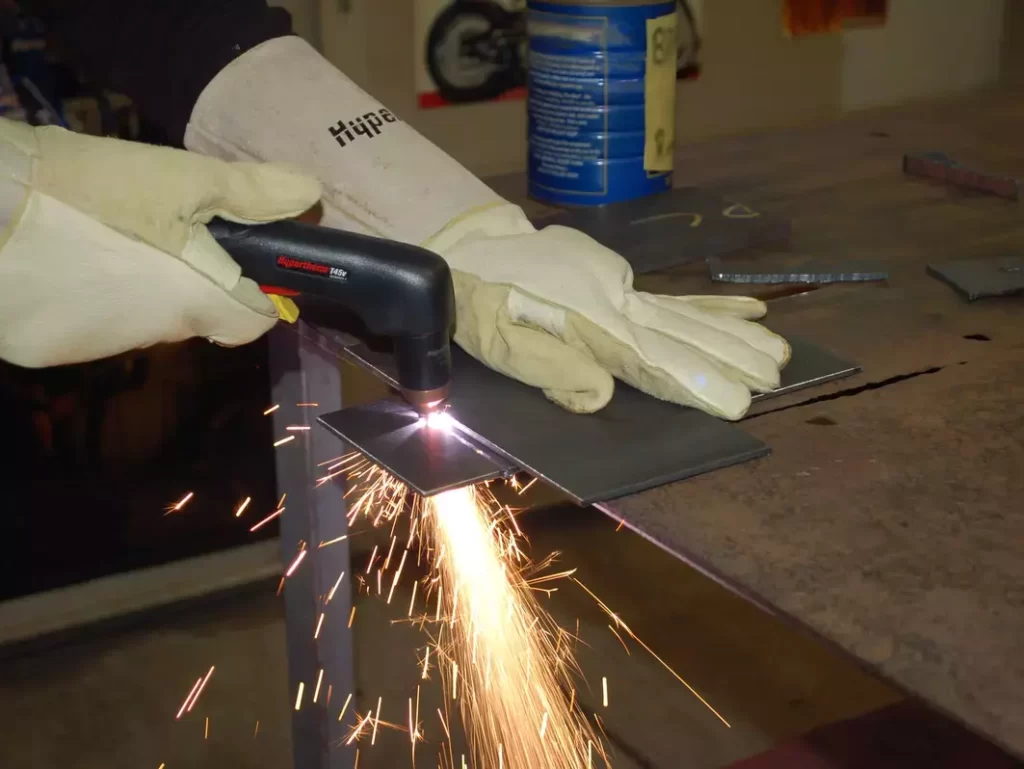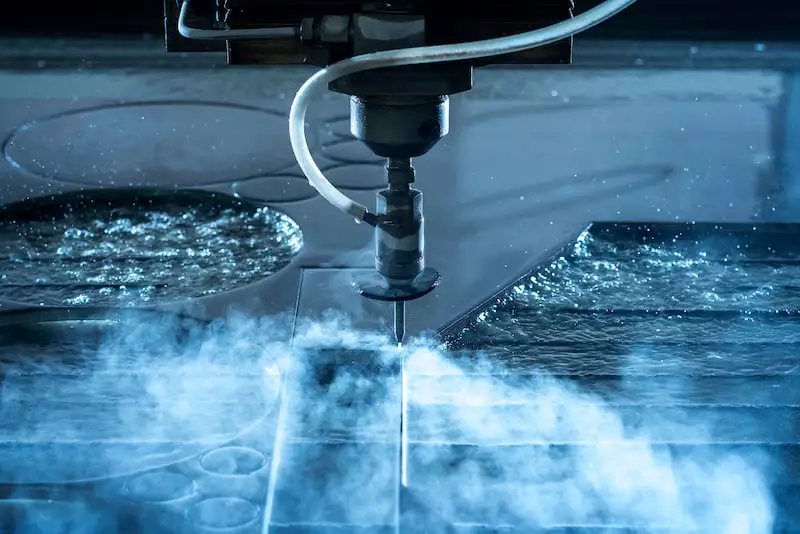Choosing between a plasma cutting machine or the laser or waterjet cutting equipment takes some knowledge about these cutting processes.
More often than not, cutting process selection won’t affect welding the cut parts, but the cutting process can significantly impact the cost and cut quality. Not to mention the problem of the heat-affected zone.

To help you understand the differences between plasma vs laser vs waterjet cutting, we will outline the advantages and disadvantages of each.
Laser Cutting
Demand has increased for laser cutting because the technology provides highspeed cutting with a high-degree of accuracy and good control over the amount of heat that is conveyed to the metal being cut. The good heat control allows metals to maintain the characteristics for which they were designed and produced.
With a laser beam that typically has a 0.2 mm diameter at the cutting surface and power of 1000 watts to 2000 watts, laser also can cut complex exterior contours on metals.

CNC laser cutting machine can easily surpass the $1,000,000 price. Laser machines for high cut quality and large volume production are the most expensive. Plasma cutting equipment and waterjet are less costly.
Advantages Of Laser Cutting Process
- Laser cutters can slice a variety of metal and non metals
- Produce exceptional accuracy; often better than 0.002″
- Narrow kerf width and hole diameters lower than 1/2 the thickness of cut materials
- Cuts thinner material with speed above 1000 inches per minute (“IPM”)
- Laser cutter can cut thick and thin material at the same time
- Shuttle tables improve efficiency
- Edge cut squareness is below 1 degree
- Easy to automate
- Produces a narrow heat affected zone (“HAZ”), better than plasma, but not as good like a waterjet cutting tool
Laser Cutting Method Disadvantages
- Extremely expensive for large scale operations
- Differences in carbon steel material quality can affect cut quality
- High cost for shielding gas
- Laser cutters are dangerous and require operator to follow safety protocols
- Cutting materials may experience micro fracturing. As a result, laser cutting tools are not often used in some aerospace aplications
- Cutting reflective metal like aluminum sheets can damage the focusing lens
Plasma Cutting
Plasma Arc cutting uses open arc that is constricted by a small nozzle, or orifice, that combines with the electrode to forms the plasma to the correct shape to cut the workpiece. The gas used in plasma arc systems typically is air.
The gas is combined with an electrical current to create a high temperature plasma arc. When put into contact with an electrically conducive material, the arc passes through the metal, melting a thin area, and the force of the arc pushes the molten metal through the workpiece to sever the material.

The plasma cutting process can cut any type of electrically conductive metal including brass, copper and titanium and it can cut galvanized metals. Also, it is a fast process, and can cut as much as 75 in. of metal per minute on 3/8-in. steel. Plasma arc cutting also is clean, and produces a small and more precise kerf with well-defined, and straight edges.
There are hundreds of portable, air plasma cutters you can buy for a low price, making the plasma cutting process the most cost effective. We have a full buying guide with reviews of the top plasma cutters on the market today. We reviewed Hypertherm, Hobart, Eastwood, Lincoln Electric, Miller, Primeweld, and YesWelder cutters.
But keep in mind that any portable plasma cutter can’t be used for high volume production rate. However, these tools get the job done most of the time, and many allow use with CNC tables. So, for a low amount of money, a standard welding shop can cut metals like most metals easily.
Plasma Cutter Advantages
- Cuts all conductive metals like mild steel, stainless steel, aluminum, brass, copper, etc.
- High definition plasma cutting equipment can cut with accuracies at 0.008″ but such plasma cutters are more expensive
- Cuts 1 in. thick mild steel up to 45-50 IPM
- Easy to learn and use
- Works using regular compressed air. You don’t need an expensive inert gas, but you can use inert gas for improved performance
- Consumables are not very expensive
- Many plasma cutters work with CNC software
- Plasma cutting equipment is often portable and inverter based
- High duty cycles are possible. Sometimes up to 100%
Disadvantages of Plasma Cutting Method
- Least accurate compared to laser cutting and waterjet cutting
- Large HAZ zone can lead to heat distortion and material losing favorable mechanical properties. For example, steel may become more brittle in the HAZ. But, the heat issue can be reduced to an extent by cutting under water
- While easy to use, plasma cutters require the use of full personal protective equipment just like when welding. You need a welding helmet, gloves, boots, jacket, and to follow plasma cutting safety protocols
- Not as flexible like waterjet and laser cutting
- Produces a lot of fumes, sparks, and molten slag
- Edge quality is lower compared to laser and waterjet
- Consumables deteriorate fast and require frequent change
- Causes micro fractures in some materials
Waterjet Cutting Systems
Waterjet cutters are versatile and can cut almost any shape in a single step, and they provide edge quality that typically does not require secondary finishing.
Those characteristics make waterjet cutting an attractive for speed and cost reductions.
Additionally, costly tool changes are not required to change to different materials from job-to-job.

Abrasive waterjets cut with erosion, rather than shearing or heat, so they produce exceptional edge quality and do not induce heat-affected zones or mechanical stresses into the cut metal or other materials.
However, there are some challenges to waterjet cutting. Errors can be caused in the geometry of the cut -part geometry by the bending of the stream. Additionally, they are expensive, not portable, and used mostly for high volume production rate.
Waterjet Advantages
- Cuts every material
- Produces exceptional part accuracy often better than 0.002″
- There is no HAZ, so the cut element doesn’t experience degradation in quality
- It cuts thick materials up to 10″ thickness
- It can cut soft materials
- Much lower purchase cost compared to laser cutting machines
- Doesn’t generate fumes, sparks, or molten debris
- Minimal kerf width
- Low learning curve; waterjet equipment is easy to operate
- Simple to maintain and repair
Waterjet Disadvantages
- Much slower cutting speeds than laser or plasma cutters can provide. This results in more costly production because it takes more time to finish the cut
- Waterjet cutters produce dust that can damage the equipment
- High cost for the cutting media that can exceed $12 per hour
- Disposing the leftover debris and side products of the waterjet can be an EPA issue
- Waterjet also experiences nozzle degradation as a plasma torch and requires maintenance
Plasma Vs Laser Vs Waterjet Cutting Conclusion
For small to medium level production rate it’s best to stick to plasma cutting equipment, especially if you don’t need perfect cut quality. But, if you work with sensitive industries, laser or a waterjet equipment makes more sense. However, plasma cutters are the only cost effective method of slicing metal.





